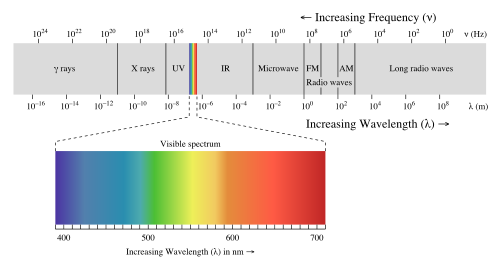FLIR Lepton Hookup Guide
Theory
Electromagnetic radiation is all around (and within, and throughout) us and is comprised of everything from gamma radiation on the high frequency end to radio waves on the low frequency end. While most imaging sensors detect radiation in the visible spectrum (wavelengths from 380 to 700 nanometers), long wave infrared sensors detect radiation from 900 to 14,000 nanometers. This is known as the infrared spectrum, and it accounts for most of the thermal radiation emitted by objects near room temperature.
The sensor inside the FLiR Lepton is a microbolometer array. Microbolometers are made up of materials which change resistance as they’re heated up by infrared radiation. By measuring this resistance, you can determine the temperature of the object that emitted the radiation and create a false-color image that encodes that data.
Thermal imaging of this type is often used in building inspection (to detect insulation leaks), automotive inspection (to monitor cooling performance), and medical diagnosis. Also, because of its ability to produce an image without visible light, thermal imaging is ideal for night vision cameras.
When it comes to robotics, thermal cameras are especially useful heat detectors because the image that they produce (by virtue of being, well, an image) can be processed using the same techniques and software as visible light images. Imagine using something like OpenCV to track, not just color centroids, but heat centroids! That’s right, you could be building heat-seeking robots right in your own home!
In fact, what are we waiting for? Let me give you the tour...
